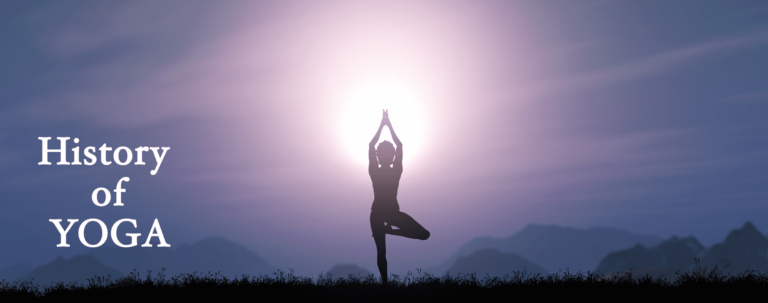Yoga's History By Vasanti

Yoga’s History has many places of obscurity and uncertainty due to its oral transmission of sacred texts and the secretive nature of its teachings. The early writings on yoga were transcribed on fragile palm leaves that were easily damaged, destroyed or lost. The development of yoga can be traced back to over 5,000 years ago, but some researchers think that yoga may be up to 10,000 years old old. Yoga’s long rich history can be divided into four main periods of innovation, practice and development.
1. Classical Yoga
In the pre-classical stage, yoga was a mishmash of various ideas, beliefs and techniques that often conflicted and contradicted each other. The Classical period is defined by Patanjali’s Yoga-Sûtras, the first systematic presentation of yoga. Written some time in the second century, this text describes the path of Raja Yoga, often called “classical yoga”. Patanjali organized the practice of yoga into an “eight limbed path” containing the steps and stages towards obtaining Samadhi or enlightenment. Patanjali is often considered the father of yoga and his Yoga-Sûtras still strongly influence most styles of modern yoga.
2. Classical Yoga
In the pre-classical stage, yoga was a mishmash of various ideas, beliefs and techniques that often conflicted and contradicted each other. The Classical period is defined by Patanjali’s Yoga-Sûtras, the first systematic presentation of yoga. Written some time in the second century, this text describes the path of Raja Yoga, often called “classical yoga”. Patanjali organized the practice of yoga into an “eight limbed path” containing the steps and stages towards obtaining Samadhi or enlightenment. Patanjali is often considered the father of yoga and his Yoga-Sûtras still strongly influence most styles of modern yoga.
3. Post-Classical Yoga
A few centuries after Patanjali, yoga masters created a system of practices designed to rejuvenate the body and prolong life. They rejected the teachings of the ancient Vedas and embraced the physical body as the means to achieve enlightenment. They developed Tantra Yoga, with radical techniques to cleanse the body and mind to break the knots that bind us to our physical existence. This exploration of these physical-spiritual connections and body centered practices led to the creation of what we primarily think of yoga in the West: Hatha Yoga.
4. Modern Period
In the late 1800s and early 1900s, yoga masters began to travel to the West, attracting attention and followers. This began at the 1893 Parliament of Religions in Chicago, when Swami Vivekananda wowed the attendees with his lectures on yoga and the universality of the world’s religions. In the 1920s and 30s, Hatha Yoga was strongly promoted in India with the work of T. Krishnamacharya, Swami Sivananda and other yogis practicing Hatha Yoga. Krishnamacharya opened the first Hatha Yoga school in Mysore in 1924 and in 1936 Sivananda founded the Divine Life Society on the banks of the holy Ganges River. Krishnamacharya produced three students that would continue his legacy and increase the popularity of Hatha Yoga: B.K.S. Iyengar, T.K.V. Desikachar and Pattabhi Jois. Sivananda was a prolific author, writing over 200 books on yoga, and established nine ashrams and numerous yoga centers located around the world.

Working Hours
- Uk classes - Tuesdays and Wednesdays Timing 7.30-8.30pm
- Kenya classes - Mondays, Wednesdays and Fridays Timings 8.30-9.30am
- Evening classes - Mondays and Thursdays Timings 6-7pm
Popular Services
Contact Us
- vashalai@yahoo.com
- +447716678488
Copyright © 2021 Vasanti Yoga All rights reserved